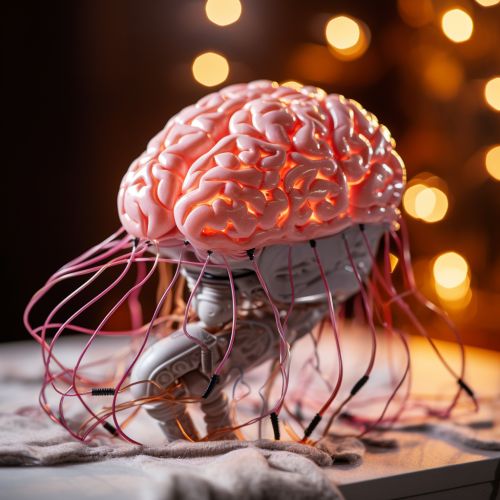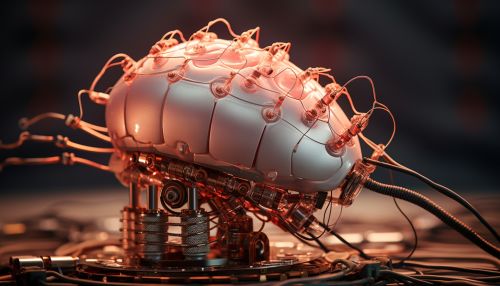Brain Stimulation Methods
Introduction
Brain stimulation methods are a collection of techniques used to directly or indirectly stimulate the brain. These methods are used in both clinical and research settings, and can be broadly divided into invasive and non-invasive techniques. Invasive techniques involve direct physical contact with the brain, while non-invasive techniques stimulate the brain indirectly, often through the skull.


Invasive Brain Stimulation Methods
Invasive brain stimulation methods involve direct physical contact with the brain. These methods are typically used in clinical settings, often as a last resort for conditions that have not responded to other treatments.
Deep Brain Stimulation (DBS)
Deep Brain Stimulation (DBS) is a surgical procedure that involves implanting a device that sends electrical signals to specific areas of the brain. DBS is typically used to treat neurological conditions such as Parkinson's disease, dystonia, and essential tremor.
Vagus Nerve Stimulation (VNS)
Vagus Nerve Stimulation (VNS) is another form of invasive brain stimulation. It involves implanting a device under the skin in the chest, which sends electrical signals to the brain via the vagus nerve. VNS is primarily used to treat epilepsy and depression.
Cortical Stimulation
Cortical stimulation involves applying electrical current directly to the surface of the brain. This method is often used in the mapping of brain function during neurosurgery.
Non-Invasive Brain Stimulation Methods
Non-invasive brain stimulation methods stimulate the brain indirectly, often through the skull. These methods are typically used in research settings, but some are also used clinically.
Transcranial Magnetic Stimulation (TMS)
Transcranial Magnetic Stimulation (TMS) is a non-invasive method that uses a magnetic field generator, or coil, placed near the head. The coil produces small electrical currents in the region of the brain just under the coil via electromagnetic induction.
Transcranial Direct Current Stimulation (tDCS)
Transcranial Direct Current Stimulation (tDCS) is another non-invasive brain stimulation method. It uses constant, low current delivered to the brain area of interest via electrodes on the scalp.
Transcranial Alternating Current Stimulation (tACS)
Transcranial Alternating Current Stimulation (tACS) is a form of brain stimulation that uses a constant, alternating current delivered to the brain area of interest via electrodes on the scalp.
Applications of Brain Stimulation Methods
Brain stimulation methods have a wide range of applications, both in clinical and research settings.
Clinical Applications
In clinical settings, brain stimulation methods are used to treat a variety of neurological and psychiatric conditions. These include Parkinson's disease, epilepsy, depression, and dystonia.
Research Applications
In research settings, brain stimulation methods are used to study brain function and to develop new treatments for neurological and psychiatric conditions.
Risks and Side Effects
Like all medical procedures, brain stimulation methods carry risks and potential side effects. These can range from minor side effects such as scalp discomfort and headache, to more serious risks such as seizures, mania (if you have bipolar disorder), and hearing loss if ear protection is not used during TMS.
